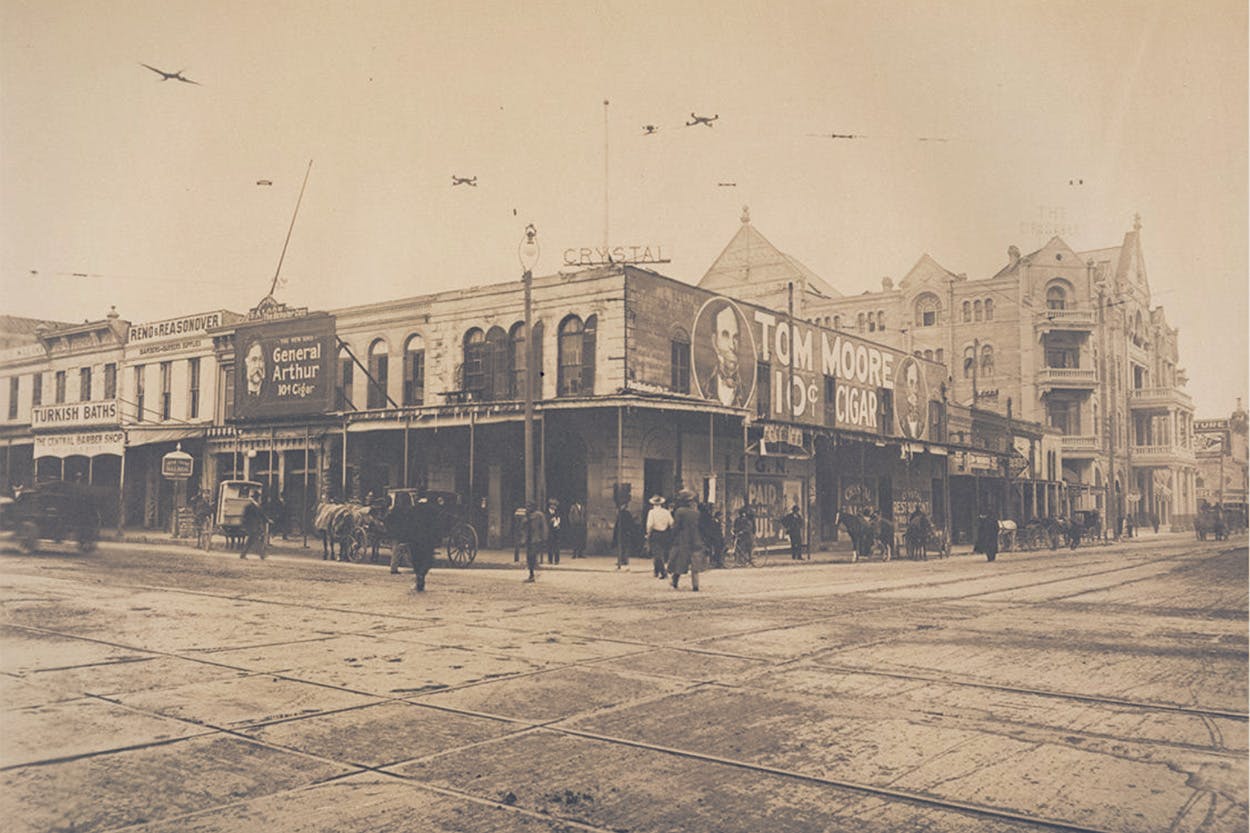When it became clear a serial bomber was at work in Austin, first targeting the city’s minority residents before turning to a wealthy, predominantly white neighborhood, several people mentioned to me that the bombings reminded them of the work of an anonymous serial killer who terrorized Austin in 1885, 138 years ago. I wrote a book about him titled The Midnight Assassin: Panic, Scandal and the Hunt for America’s First Serial Killer. For almost exactly one year, the Midnight Assassin, as he came to be known, crisscrossed Austin, slamming an ax into the skulls of sleeping women, dragging them into their backyards, and then mutilating their bodies before slipping away into the night, undetected.
He initially went after young black servant women, and white residents were not particularly upset. These “Negro murders,” as one man put it, had nothing to do with them. But on Christmas Eve 1885, the killer sent Austin spiraling into chaos when, in the space of an hour, he murdered and mutilated two prominent white Austin socialites, driving a steel rod through the ears of one woman, essentially lobotomizing her, and jamming a piece of kindling into the vagina of the other victim. As word of the double murder spread over party line telephones (the nineteenth century’s version of texting), at least 4,000 panicked citizens raced out of their homes and gathered at the intersection of Congress Avenue and Sixth Street (then known as Pecan Street), Austin’s two main boulevards. The men held torches, rifles, pistols, and bayonets. Women and children huddled together in wagons. One confused child asked his daddy if they were there to see Santa Claus.
At the time, the science of criminology had not been invented. There was no fingerprinting or blood typing or hair evidence. All the cops had to go on were the noses of their bloodhounds, who sniffed the bodies, hoping to find the scent of the killer. But the scents led nowhere. Some victims were so bloodied that all the bloodhounds could smell was the dead women’s blood.
Nevertheless, the clueless police arrested one black man after another, accusing each of them of a murder of a servant woman. (Playing off the racist attitudes of the day, the police said these black men were uneducated and uncontrollable and consumed with “blood lust.”) After the Christmas Eve murders, the police promptly arrested the husbands of the two white victims, accusing them of copycatting the black murders as a way to get rid of their own wives.
Soon, a leading candidate for governor was accused of committing at least one of the murders. Other people believed an inmate from the State Lunatic Asylum had been slipping out at night to massacre women. Anxious city leaders came up with increasingly desperate proposals to stop the killings. One city councilman suggested that every woman in Austin be given a guard dog. Another wanted the entire city to be lit with newly invented electric “moon towers” (arc lamps) so that the killer would have no place at night to hide.
In those years, the phrase “serial killer” did not exist. There were no FBI agents who specialized in “behavioral science,” studying crime scenes and creating a “profile” of the killer. (There was, of course, no FBI.) Prior to the Midnight Assassin’s rampage in Austin, no American city had ever confronted a brutal monster who for some unknown reason was driven to slaughter, in almost ritualistic fashion, one person after another. As a reporter for the New York World newspaper put it, the Midnight Assassin was a killer “who gives to history a new story of crime.”
The Midnight Assassin was never caught, and for years the community remained apprehensive, wondering if he would return. In fact, in 1895, a decade after the murders had come to an end, the “moon towers” were erected, lighting much of the city. The first night the lights came on, citizens poured out of their homes and celebrated, thinking this new light would keep them safe from whatever lurked in the darkness.
What we know now, tragically, is that nothing keeps us safe from these kinds of killers. More than 500 federal officers poured into Austin to help the Austin Police Department look for the bomber. They relied on technology that didn’t exist during the Midnight Assassin’s era: security video, cell phone records, computer searches, and store receipts. Still, for three weeks, he was able to elude authorities—and frankly, if he hadn’t made some mistakes, he could still be on the loose.
While Austin-area residents remain cautious—the same advances in technology that helped catch the bomber might have helped him lay traps to kill or maim after he himself was dead—they are at least thankful there’s an end to this saga in sight. But what they also know is there’s no reason to celebrate. Inevitably, somewhere in this country, someone will go on another prolonged killing spree, wreaking havoc for his own personal satisfaction. There’s no telling where it will happen next.
Let’s just hope that the police will be able to catch him quickly too.








